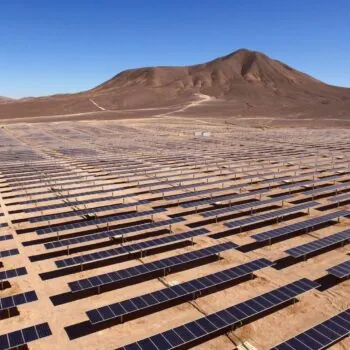Over the past decades, Europe has made real progress in preparing its economy for the low-carbon transition. We have decoupled GDP growth from increases in carbon pollution, we have made our industries more efficient (though there is much more to do), and we have invested billions of euros in the fast-growing industry sectors that could drive our economy to a high-innovation, high-value, high-employment and low-carbon future.
The world has changed too. The global low carbon economy has moved from a mere projection to a $4 trillion (€2.9 trillion) reality, which grows at nearly 4% every year. Low-carbon and environment sectors continued to grow robustly through the financial crisis across the European Union.
At the same time, oil prices have risen far beyond even the highest scenarios used to assess the cost effectiveness of Europe's 20:20:20 package. Increases in fossil import costs suck an additional €200 billion (€145bn) a year out of the struggling European economy. These costs would have been even higher if European climate change policy had not led to improvements in energy efficiency and reduced the growth of import dependence.
Yet instead of backing Europe's successful new industries in their efforts to win the global low carbon race, European leaders are listening to the voices of fossil-fuel dependent industries claiming that they will be forced to move abroad by any ambitious European climate targets for 2030. So-called ‘carbon leakage'.
It is true that some chemical companies are building new factories in the United States in order to benefit from cheap feedstock gas. This trend cannot be reversed by tinkering with energy prices. It is a normal result of open markets. Cheap energy never has been, and never will be Europe's advantage.
Our economic advantage is productivity, skills, innovation and smart and new energy.
A concerted heavy industry lobbying effort has created a distorted view in Brussels that the EU should commit itself to less than 40% greenhouse-gas cuts from 1990 levels by 2030 and make maximum use of offsets that do nothing to transition our domestic sectors. The fact is that Europe is already over halfway to delivering this target. With no extra effort Europe will reduce emissions by 32% in 2030. So in reality, anything less than a 40% domestic target would imply a massive slow down in the development of European low-carbon markets.
Given the huge potential for cost-effective energy efficiency, at a time of rising oil prices and abundant cheap capital, the target should be more like 50%. This is also nearer to what climate science demands. It is the kind of offer that Europe needs to put on the table if it is to persuade China to join a global climate agreement in 2015.
Europe's competitors for low-carbon markets such as China, South Korea, and Mexico cannot believe their luck, and our lack of foresight, at potentially throwing away the EU's hard won dominance in green technology and market share. Timidity by European leaders on climate ambition would effectively waste the billions of investment by taxpayers which has supported European low-carbon industrial leadership.
In Germany, €20bn a year has been spent on renewable-energy generation capacity, bringing solar and wind technology down the learning curve and thereby making it competitive with fossil fuels in many countries. In the UK, more offshore wind has been installed than the rest of the world combined.
Now, we need these industries to grow, export, create jobs, cut our fossil-fuel exposure, increase our energy security and begin to make the best use of Europe's most valuable resource: the power of human creativity, to make our future sustainable.
The decisions Europe needs to take to on climate and energy policy for 2030 are relatively simple. Start by saving money through ambitious targets for improving energy efficiency in our vehicles, industries and buildings, drive the continued replacement of old coal power stations with renewable energy, deliver the grid infrastructure and markets needed to supply it, and set an ambitious greenhouse-gas emissions-reduction target which would result in an effective carbon price and keep Europe on a credible pathway to full decarbonisation by 2050.
Without these clear signals investments will not be made and European companies will build their new factories in the growing demand centres of Asia.
The irony is that most of the energy-intensive companies lobbying for low climate ambition are themselves profiting from the opportunities presented by the low carbon economy. Replacing imported fossil fuels with domestic investment in low-carbon infrastructure is driving increased use of steel, cement, chemicals, glass and copper. We must have a plan to transition the energy-intensive sectors that will be necessary to the low-carbon economy, but we cannot allow industrial policy to become hostage to a battle against the transition to a low-carbon economy itself.
What Europe needs to worry about is not carbon leakage, but low-carbon leakage.
We have built the foundations of a world-leading low-carbon economy. If we lose our nerve now, all that investment, potential employment and the future of our economy will be wasted and the low-carbon future will happen elsewhere.
This article was first published by European Voice.


